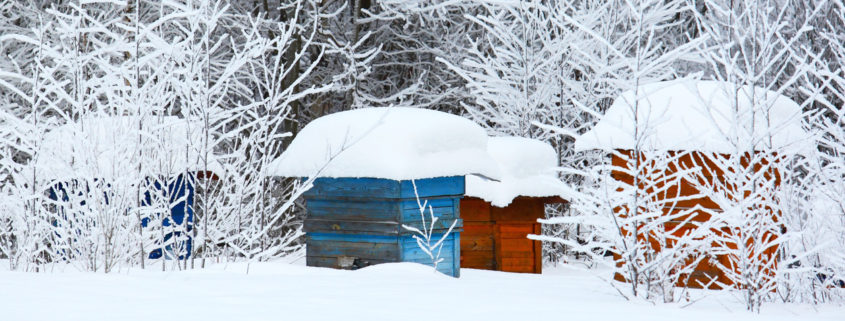Because drones are some of the least appreciated honeybees among beekeepers, it follows that the frames of honeycomb that are set up to breed them would be equally under-appreciated. A colony of bees will build honeycomb cells in two sizes, regular-size or drone-size. Most natural honeycomb, and just about all “foundation” for sale by beekeeping supply companies is regular-sized, meaning that the brood that is raised will become worker bees. After all, nearly all beekeepers prefer worker bees that make honey over so-called “worthless” drone bees that mainly consume honey.
Regardless of the efforts of the beekeeper, however, all beehives have a strong instinct to raise a certain percentage of drone honeybees, especially during the swarm season in the spring. To rear new drones, the hive requires that some of the cells in the honeycomb be of the larger drone-sized variety.
Since it creates all of its own comb, a feral or top bar hive has no problem creating some drone-sized comb of it own, and adding it to the existing worker-sized comb that it already has. A managed Langstroth beehive, however, often does not have an easy way to build drone-sized cells. In this type of hive, the beekeeper provides all of the frames of honeycomb, which are nearly universally worker-sized. As a result, the bees themselves have to improvise where and how they can construct drone comb given the limited space to do so. Often the bees construct some makeshift drone comb between the boxes. Or, if some old honeycomb is damaged or has a hole in it, the bees eagerly replace the damaged area with drone-sized comb.
Once in a while, a beekeeper runs into an old frame, which as a result of being heavily damaged and re-repaired by the bees, consists nearly entirely of this rebuilt drone comb. These types of frames, one of which is pictured above, show up often in commercial beekeeping operations where frames are apt to be damaged by regular handling. As a rule, commercial beekeepers dislike these frames and often discard and replace them as soon as they are discovered.
On the other hand, queen rearing outfits, such as Wildflower Meadows, love drone comb! The more drone honeycomb, the more drones available, and the better the mating chances and better quality of the resulting queens. At Wildflower Meadows, we like to make sure that our best colonies have at least two frames of drone comb to produce the maximum quantity of drones. The frame pictured above, worthless to many beekeepers, is “drone gold” to us!














